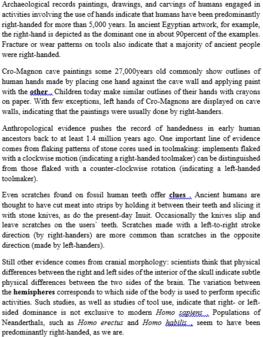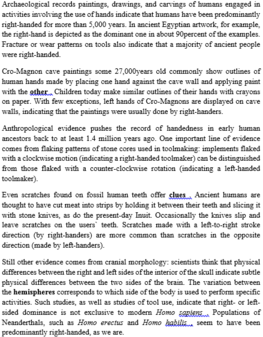Read the following passage and mark the letter A, B, C, or D on your answer sheet to indicate the correct answer to each of the questions from 43 to 50.
It's called 42 – the name taken from the answer to the meaning of life, from the science fiction series The Hitchhiker's Guide to the Galaxy. 42 was founded by French technology billionaire Xavier Niel, whose backing means there are no tuition fees and accommodation is free. Mr Niel and his co–founders come from the world of technology and start–ups, and they are trying to do to education what Facebook did to communication and Airbnb to accommodation.
Students at 42 are given a choice of projects that they might be set in a job as a software engineer – perhaps to design a website or a computer game. They complete a project using resources freely available on the Internet and by seeking help from their fellow students, who work alongside them in a large open–plan room full of computers. Another student will then be randomly assigned to mark their work.
The founders claim this method of learning makes up for shortcomings in the traditional education system, which they say encourages students to be passive recipients of knowledge. "Peer–to–peer learning develops students with the confidence to search for solutions by themselves, often in quite creative and ingenious ways."
Like in computer games, the students are asked to design and they go up a level by completing a project. They graduate when they reach level 21, which usually takes three to five years. And at the end, there is a certificate but no formal degree. Recent graduates are now working at companies including IBM, Amazon, and Tesla, as well as starting their own firms.
"The feedback we have had from employers is that our graduates are more apt to go off and find out information for themselves, rather than asking their supervisors what to do next," says Brittany Bir, chief operating officer of 42 in California and a graduate of its sister school in Paris. Ms Bir says 42's graduates will be better able to work with others and discuss and defend their ideas – an important skill in the “real world” of work. "This is particularly important in computer programming, where individuals are notorious for lacking certain human skills," she says.
But could 42's model of teacherless learning work in mainstream universities? Brittany Bir admits 42's methods do not suit all students. "It suits individuals who are very disciplined and self–motivated, and who are not scared by having the freedom to work at their own pace," she says.
(Adapted from http://www.bbc.com/news/business–37694248)
The author mentions “to design a website or a computer game” in paragraph 2 to
illustrate_________.
A. a job that a French software engineer always does
B. a choice of assignment that students at 42 have to complete
C. a free resource available on the Internet
D. a help that students at 42 get for their work





Đáp án B
Đáp án là B. a choice of assignment that students at 42 have to complete.
“Students at 42 are given a choice of projects that they might be set in a job as a software engineer - perhaps to design a website or a computer game”
Dịch: Để minh họa cho một nhiệm vụ mà học tinh ở 42 phải hoàn thành: có thể là thiết kế 1 website hoặc là một game máy tính.